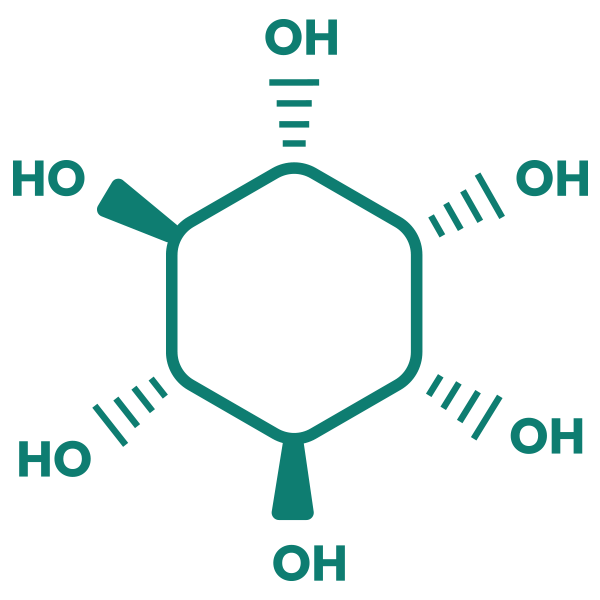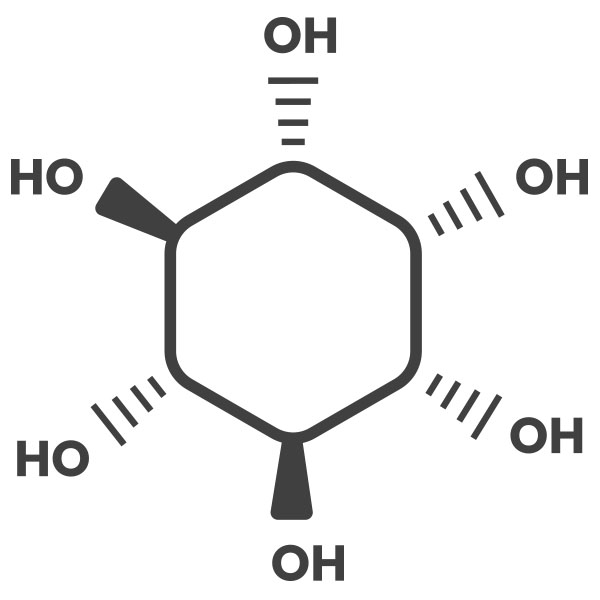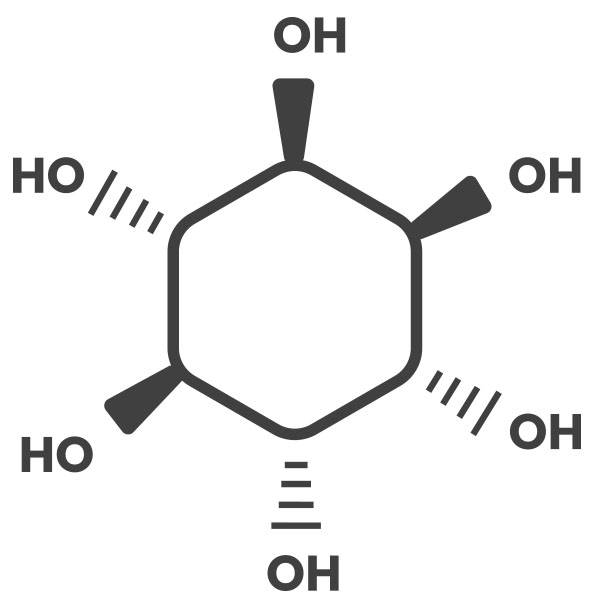What is inositol
Inositol is a natural molecule that is found in the phospholipids of cell membranes, in the lipoproteins of the plasma and, in the form of inositol-phosphates, in the nucleus of cells.
When we speak of inositol, we are actually talking about a group of nine differents stereoisomers, so it would be more correct to use the plural “Inositols”. Among these, however, the term inositol is generally used to refer to the most bioavailable type, myo-inositol.

Where to find it in nature
Inositol is widespread in vegetables: green beans, peas, asparagus and carrots are rich in it.
It is also found inside fruits, like pears, cherries, apples and tomatoes. Inositol is present in oats, corn and cereals as a component of lecithins. In animal tissues, myo-inositol is mainly present in free form or as phosphatidylinositol (PI). Tissues as brain and muscles, are full of it. Huge amounts of myo-inositol can be present in the sperm, oocyte and embryo during the early stages of embryonic development.
What are the benefits
Today, myo-inositol represent a safe and effective therapy applied in several disease and pathologies.
In PCOS, the administration of myo-inositol caused the remission of symptoms and the reduction of male hormone secretion; In case of male infertility, inositol has improved, according to reports from various studies, motility and sperm count, while in women it improves the oocyte and embryonic quality.
Furthermore, myo-inositol produces an increase in the sensitivity of the serotonin receptor, also known as the happy hormone, with benefits on anxiety disorders.
The benefits of inositol have also been investigated in relation to diabetes and the prevention and treatment of metabolic syndrome.
But what difference is there between Myo and D-chiro-inositol?
However, even if their biological functions are often confused, it should be remembered that myo and d-chiro have different roles within the body.
Myo-inositol
is involved in the use of transporters
and in the glucose’s cellular absorption

Myo regulates the activity of several hormones such as insulin, thyroid hormone (TSH) and follicle stimulating hormone (FSH).
D-chiro-inositol
it is involved in glucose metabolism
and storage in the form of glycogen.

D-chiro is involved in the synthesis of insulin-dependent androgens and acts as modulator of aromatase.
Myo and D-chiro 40:1
A question of science!
Learn More
Myo-inositol
D-chiro-inositol
40:1
Alpha-lactalbumin
PCOS
Overweight